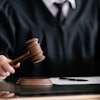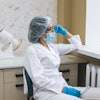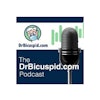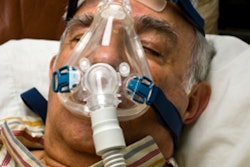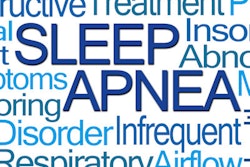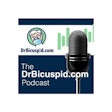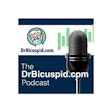
ATLANTA - Screening all dental patients for obstructive sleep apnea (OSA) saves lives, according to a presentation at this week's 2017 ADA annual meeting. It's also likely to become ADA policy shortly. Here are some things you should know about the condition.
 Ken Berley, DDS, JD, spoke about sleep apnea at the 2017 ADA annual meeting.
Ken Berley, DDS, JD, spoke about sleep apnea at the 2017 ADA annual meeting.Ken Berley, DDS, JD, spoke about the importance of dentists screening patients for OSA, recommending that all dentists do so and take a course to learn more about it if necessary. The ADA will be voting soon on whether to pass a policy statement encouraging dentists to screen for sleep-related breathing disorders, he noted.
"My biggest regret is that I didn't start sooner," said Dr. Berley, who is trained in dental sleep medicine and practices in Rogers, AR. "My dad could be alive."
He explained that his father died of a stroke in the middle of the night.
"This is a serious medical condition," he told the session attendees. "Please understand that."
Standard of care
Approximately 52 million Americans and almost one-fourth of the men seen in any dental practice have OSA, according to Dr. Berley.
"You are literally suffocating at night," he said of the experience.
However, less than 15% of these people have been diagnosed with OSA, and only 25% of this group has successfully used a continuous positive airway pressure (CPAP) device all night every night.
Justice Antonin Scalia, his favorite U.S. Supreme Court justice, died with a CPAP device on his nightstand, Dr. Berley noted.
"He's a poster child for CPAP," he said. "So am I."
“The takeaway right here is that if something is deemed to be in your scope of practice, you don't need to treat it, but you do need to recognize it.”
Sleep-disordered breathing is within the scope of practice for general dentistry, and, therefore, dentists should be required to screen for it, Dr. Berley explained.
"The takeaway right here is that if something is deemed to be in your scope of practice, you don't need to treat it, but you do need to recognize it," he said.
Dr. Berley noted, though, that current medical protocol is that dentists cannot diagnose OSA, and he suggested that dentists communicate regularly with patients' physicians.
Sleep-disordered breathing isn't present only in older men, he explained. Women who tell physicians they are fatigued or depressed and have been put on antidepressants may have OSA, he said. Screening is also important for pediatric patients.
"If you're a child and you snore, you have OSA," Dr. Berley said. Children with OSA may also have conditions such as ADHD, he added.
"We can absolutely change their lives," he said. "We can cure sleep apnea in kids."
How to screen
Dr. Berley explained that dentists can screen for OSA in various ways, including the following:
- Take a medical history and include questions about OSA diagnosis, CPAP usage, diseases comorbid with OSA, and sleep habits.
- Take a dental history.
- Ask OSA-related health questions.
- Perform an intraoral examination for dental signs and symptoms of OSA.
- Ask the patient's family about related symptoms.
- Administer sleep-related measures such as the Epworth Sleepiness Scale and the STOP-Bang Questionnaire.
- Take patients' blood pressure, since more than half of patients with high blood pressure have OSA.
- Measure patients' neck size with tape measure, since larger neck size is associated with OSA.
Dental signs and symptoms of OSA include the following:
- Bruxism
- Temporomandibular joint disorder (TMD)
- Abfractions
- Tooth wear or damage
- Use of an oral splint (for bruxism or orofacial pain)
- Cervical abrasions/abfractions
An OSA-related health history questionnaire should include some of the following items that can be associated with the condition:
- Loud snoring
- Choking/gasping for breath during sleeping
- Waking up frequently
- Going to the bathroom frequently at night
- Daytime naps, daytime sleepiness, poor concentration, irritability, or falling asleep during routine activities
- Higher number of cups of coffee consumed daily
- Higher body mass index
- Insomnia diagnosis
- Gastroesophageal reflux disease (GERD)/acid reflux
Factors such as having trouble falling asleep could indicate the presence of OSA, while the use of sedation medication and alcohol could worsen OSA, Dr. Berley said.
Also, if a patient has at least one comorbid disease and at least one dental sign of OSA, there is at least a 50% chance that the patient has OSA, Dr. Berley said. He recommended that all patients with comorbid diseases be screened for OSA due to the high prevalence of OSA in the following patients:
- 50% who are obese
- 50% with high blood pressure
- 28% with coronary artery disease
- 80% who have experienced stroke
- 32% with depression
- 30% with TMD/bruxism
Dr. Berley recommended that dentists find a sleep medicine physician to whom to refer their screened patients.
"Go save people's lives," he said.
